Paeonol attenuates inflammation by confining HMGB1 to the nucleus
- PMID: 33534963
- PMCID: PMC7957162
- DOI: 10.1111/jcmm.16319
Paeonol attenuates inflammation by confining HMGB1 to the nucleus
Abstract
Inflammation is a biological process that exists in a large number of diseases. If the magnitude or duration of inflammation becomes uncontrolled, inflammation may cause pathological damage to the host. HMGB1 and NF-κB have been shown to play pivotal roles in inflammation-related diseases. New drugs aimed at inhibiting HMGB1 expression have become a key research focus. In the present study, we showed that paeonol (Pae), the main active component of Paeonia suffruticosa, decreases the expression of inflammatory cytokines and inhibits the translocation of HMGB1 induced by lipopolysaccharide (LPS). By constructing HMGB1-overexpressing (HMGB1+ ) and HMGB1-mutant (HMGB1m ) RAW264.7 cells, we found that the nuclear HMGB1 could induce an LPS-tolerant state in RAW264.7 cells and that paeonol had no influence on the expression of inflammatory cytokines in HMGB1m RAW264.7 cells. In addition, the anti-inflammatory property of paeonol was lost in HMGB1 conditional knockout mice, indicating that HMGB1 is a target of paeonol and a mediator through which paeonol exerts its anti-inflammatory function. Additionally, we also found that HMGB1 and P50 competitively bound with P65, thus inactivating the NF-κB pathway. Our research confirmed the anti-inflammation property of paeonol and suggests that inhibiting the translocation of HMGB1 could be a new strategy for treating inflammation.
Keywords: HMGB1; NF-κB; P65; inflammation; paeonol.
© 2021 The Authors. Journal of Cellular and Molecular Medicine published by Foundation for Cellular and Molecular Medicine and John Wiley & Sons Ltd.
Conflict of interest statement
The authors declare that they have no conflicts of interest.
Figures
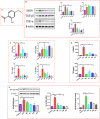
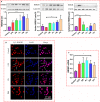
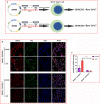
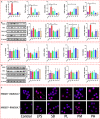
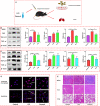



Similar articles
-
Paeonol attenuates inflammation by targeting HMGB1 through upregulating miR-339-5p.Sci Rep. 2019 Dec 18;9(1):19370. doi: 10.1038/s41598-019-55980-4. Sci Rep. 2019. PMID: 31852965 Free PMC article.
-
Paeonol Reduces the Nucleocytoplasmic Transportation of HMGB1 by Upregulating HDAC3 in LPS-Induced RAW264.7 Cells.Inflammation. 2018 Aug;41(4):1536-1545. doi: 10.1007/s10753-018-0800-0. Inflammation. 2018. PMID: 29736733
-
Paeonol attenuates acute lung injury by inhibiting HMGB1 in lipopolysaccharide-induced shock rats.Int Immunopharmacol. 2018 Aug;61:169-177. doi: 10.1016/j.intimp.2018.05.032. Epub 2018 Jun 5. Int Immunopharmacol. 2018. PMID: 29883962
-
Paeonol: pharmacological effects and mechanisms of action.Int Immunopharmacol. 2019 Jul;72:413-421. doi: 10.1016/j.intimp.2019.04.033. Epub 2019 Apr 25. Int Immunopharmacol. 2019. PMID: 31030097 Review.
-
Biological Activities of Paeonol in Cardiovascular Diseases: A Review.Molecules. 2021 Aug 17;26(16):4976. doi: 10.3390/molecules26164976. Molecules. 2021. PMID: 34443563 Free PMC article. Review.
Cited by
-
Aggravated renal fibrosis is positively associated with the activation of HMGB1-TLR2/4 signaling in STZ-induced diabetic mice.Open Life Sci. 2022 Nov 11;17(1):1451-1461. doi: 10.1515/biol-2022-0506. eCollection 2022. Open Life Sci. 2022. PMID: 36448056 Free PMC article.
-
Paeonol accelerates skin wound healing by regulating macrophage polarization and inflammation in diabetic rats.Korean J Physiol Pharmacol. 2023 Sep 1;27(5):437-448. doi: 10.4196/kjpp.2023.27.5.437. Korean J Physiol Pharmacol. 2023. PMID: 37641806 Free PMC article.
-
Plant-Derived Compounds as Promising Therapeutics for Vitiligo.Front Pharmacol. 2021 Nov 11;12:685116. doi: 10.3389/fphar.2021.685116. eCollection 2021. Front Pharmacol. 2021. PMID: 34858164 Free PMC article. Review.
-
Development of Paeonol Liposomes: Design, Optimization, in vitro and in vivo Evaluation.Int J Nanomedicine. 2022 Oct 25;17:5027-5046. doi: 10.2147/IJN.S363135. eCollection 2022. Int J Nanomedicine. 2022. PMID: 36303804 Free PMC article.
-
Paeonol protects against cisplatin-induced premature ovarian failure via anti-inflammatory and antioxidant activities: an integrated approach of network pharmacology, molecular dynamics simulation, and experimental validation.Naunyn Schmiedebergs Arch Pharmacol. 2025 Jul 24. doi: 10.1007/s00210-025-04430-2. Online ahead of print. Naunyn Schmiedebergs Arch Pharmacol. 2025. PMID: 40705082
References
-
- Hotamisligil GS. Inflammation, metaflammation and immunometabolic disorders. Nature. 2017;542:177‐185. - PubMed
-
- Galvão I, Michelle A. Mediators of inflammation. Immunopharmacol. Inflamm. 2018;21:112‐118.
Publication types
MeSH terms
Substances
Grants and funding
LinkOut - more resources
Full Text Sources
Other Literature Sources
Research Materials

